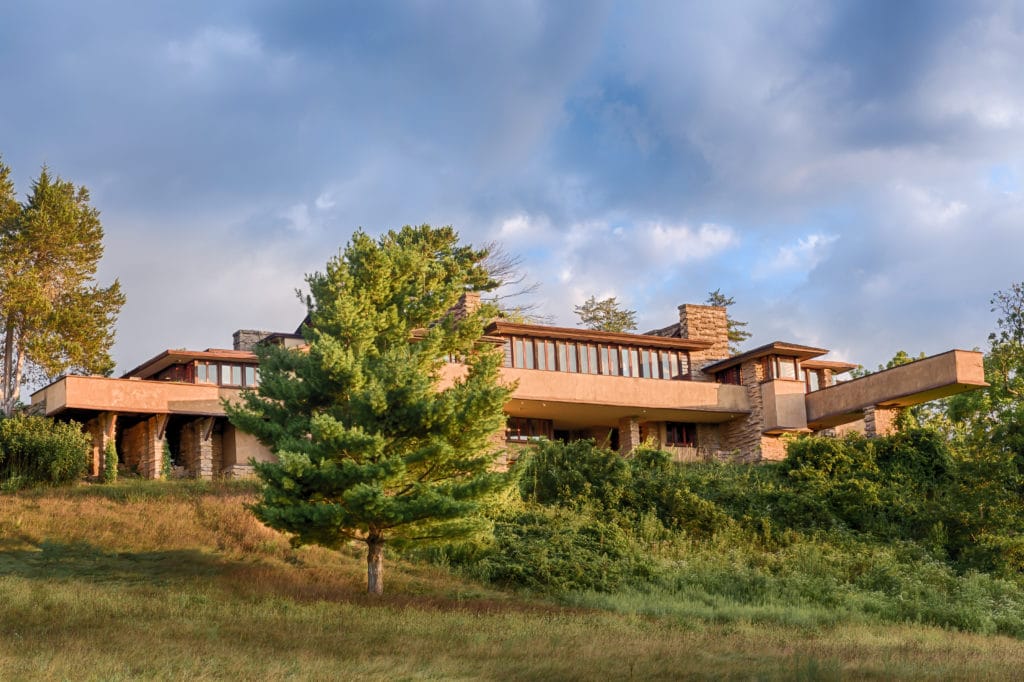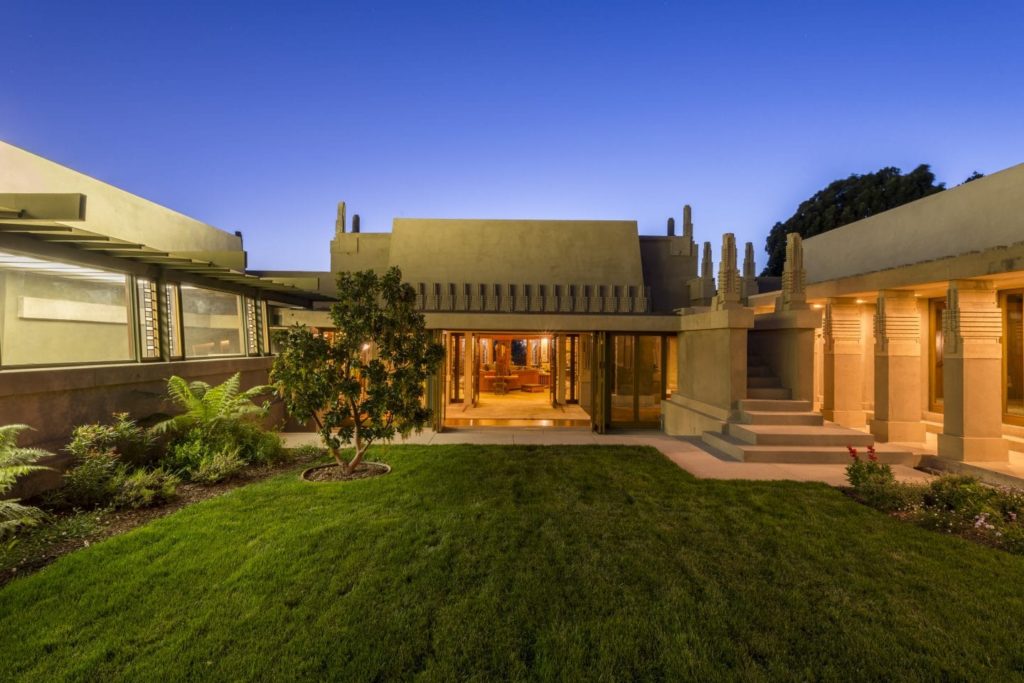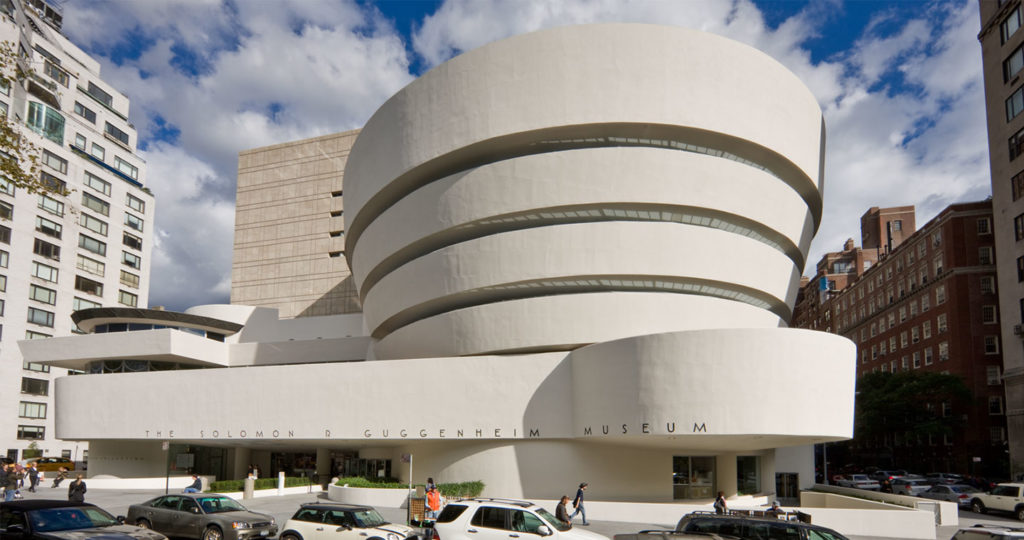

World Heritage Nomination
By Fred Prozzillo
Eight of Frank Lloyd Wright’s masterworks have been nominated for inscription onto the UNESCO World Heritage List. These combined works, collectively Key Works of Modern Architecture by Frank Lloyd Wright, constitute The United States’ first nomination of modern architecture to this prestigious list. If inscribed, they will join the great works of Atoni Gaudi, Le Corbusier, The Sydney Opera House, and the Bauhaus School.
The sites – Taliesin West in Scottsdale, AZ; Taliesin in Spring Green, Wisconsin; Fallingwater in Mill Run, Pennsylvania; Unity Temple in Oak Park, Illinois; Frederick C. Robie House in Chicago, Illinois; Hollyhock House in Los Angeles, California; Herbert and Katherine Jacobs House in Madison, Wisconsin; and the Solomon R. Guggenheim Museum in New York, New York – were chosen for their significance in the development of modern architecture. Each a National Historic Landmark, they are the best representation of the innovative modern architecture of Wright of more than 400 existing works.

The United Nations Educational, Scientific, and Cultural Organization (UNESCO) ratified the World Heritage Convention on November 16, 1972. First conceived of after World War I, this Convention served to link the protection of the world’s most valuable cultural and natural resources. By combining these formerly separate movements, the Convention identified their inherent interconnectivity and importance to the world’s collective cultural heritage.
The UNESCO World Heritage Convention outlines the criterion for inclusion on the World Heritage List, stipulates the role of the State’s Parties, and gives direction on how the World Heritage Fund is to be managed and distributed.
The World Heritage List now includes over 1,000 properties, 24 of which are located within The United States. Inscription onto the World Heritage List brings international attention and prestige to these sites and can provide resources for their preservation and safeguarding.
The nomination of these eight Wright properties was initially heard by the UNESCO World Heritage Committee in 2016. The Frank Lloyd Wright Building Conservancy drafted the nomination in collaboration with representatives from each of the sites, an expert advisory committee, and the Office on International Affairs at the National Park Service.

The nomination is supported and submitted by the National Park Service’s Office of International Affairs within the United States Department of the Interior. Former Secretary of the Interior Sally Jewell said of the nomination, “The World Heritage Sites represent an incredible opportunity for the United States to tell the world the whole story of America and the remarkable diversity of our cultural heritage as well as the beauty of our land. These works by Wright are a highly valued and unique American contribution to the world’s heritage.”
Every property included in the nomination is a key example of Wright’s contribution to, and innovations within, modern architecture. The sites range in dates from 1905 to 1959, representing the constantly evolving nature of Wright’s career, which spanned from the late 19th century to the space age. The sites reach from coast to coast and vary in setting and use from small mid-western suburban homes, sprawling desert camps, to one of the most well-known museums in the heart of Manhattan.
Throughout Wright’s career he pioneered modern architecture through his innovative use of material and structural forms to seamlessly integrate space, material, and site. Each properties’ intimate connection to its unique and diverse landscape, and to nature itself, is indicative of Wright’s organic architecture ideals. These sites are important works representative of the connection between nature and our built cultural heritage, a connection on which the World Heritage Convention was founded.

“It is a complex nomination that explains the significance of each building and its outstanding universal value,” says Lynda Waggoner, director emeritus of Wright’s Fallingwater. “We had to demonstrate how each represents a masterpiece of human creative genius and is an extraordinary contribution to modern architecture and culture.”
The nomination will be resubmitted to the Department of the Interior in December of 2018. Following this review, the nomination will then be passed to the World Heritage Committee and ICOMOS for final review and report before being heard at the 43rd World Heritage Committee in Baku, Azerbaijan in July 2019.
Inscription to the List would identify these works as being of outstanding cultural value to the global community. The Frank Lloyd Wright Foundation, representing two of the eight included masterworks, works to ensure the continued protection and meticulous care for Taliesin and Taliesin West, recognizing them as global resources to be treasured, preserved, and shared.